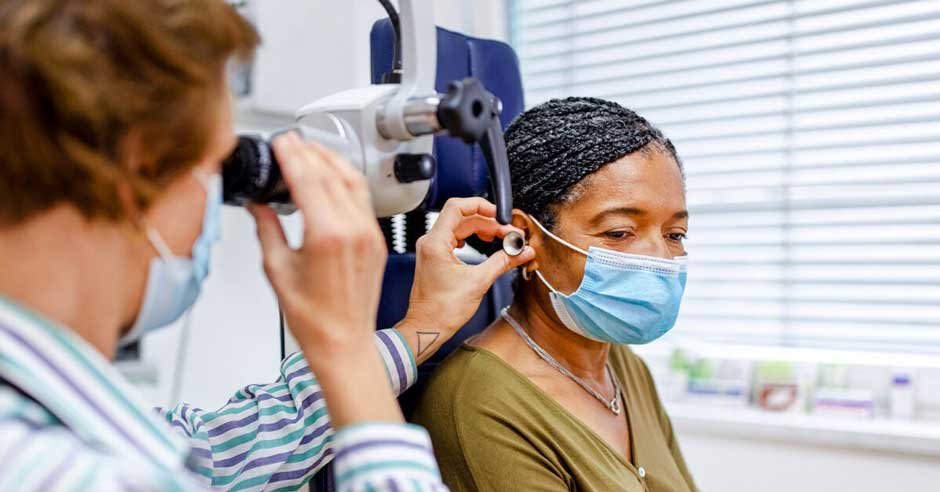Let’s talk about microsuction ear wax removal, which is considered one of the safest and most effective methods to get rid of excess earwax. If you’ve ever experienced discomfort, hearing loss, or even tinnitus due to impacted earwax, this procedure may be just what you need to restore your hearing and alleviate those pesky symptoms!
So, what exactly is microsuction ear wax removal?
Well, it involves using a small suction device that’s attached to a microscope to gently suction out the excess earwax from the ear canal. It’s typically performed by trained healthcare professionals like ear, nose, and throat doctors, audiologists, or specialist nurses who have the expertise and equipment to carry out the procedure with precision.
Pros of microsuction ear wax removal
One of the biggest advantages of microsuction is its safety. Unlike other methods that involve using water, microsuction allows the clinician to see the ear canal and earwax under a microscope throughout the procedure. This ensures that the process is precise, controlled, and minimizes the risk of leaving behind any residual wax, which can sometimes happen with other methods.
In addition to its safety, microsuction is also known for its comfort. The suction used is gentle, and most patients report minimal discomfort during the procedure. This makes it particularly suitable for individuals with sensitive ears or those who may have had negative experiences with other earwax removal methods in the past.
Another great thing about microsuction is that it’s quick and efficient. The procedure usually takes only a few minutes to complete, and the healthcare professional can remove the earwax efficiently without causing unnecessary delays or discomfort. This means you can often resume your regular activities immediately after the procedure, without having to wait around or experience prolonged discomfort.
Microsuction is also versatile and suitable for different types of earwax. Whether you have dry, wet, or hard wax, the suction can be adjusted according to the consistency of the wax, allowing for customized and effective removal. This makes it a great option for a wide range of individuals with varying earwax conditions.
Risks of microsuction ear wax removal
We asked Paul Shaw who provides ear wax removal in Leeds and he told us that just like any medical procedure, microsuction ear wax removal does come with some risks, although they are generally minimal. It’s important to be aware of these risks and discuss them with a qualified healthcare professional before undergoing the procedure. Here are some potential risks of microsuction ear wax removal:
- Infection: Although microsuction is considered a safe method of earwax removal, there is a slight risk of infection. The procedure involves inserting a small suction device into the ear canal, and if the equipment is not properly sterilized, it may increase the risk of infection. However, this risk can be minimized by ensuring that the equipment used is properly sterilized and that the healthcare professional follows proper hygiene protocols.
- Injury to the ear canal or eardrum: The ear canal and eardrum are delicate structures, and if not handled carefully, there is a risk of injury during microsuction ear wax removal. However, this risk is low when the procedure is performed by a qualified healthcare professional who has been trained in microsuction and uses appropriate equipment and techniques.
- Discomfort or pain: While microsuction is generally well-tolerated, some patients may experience discomfort or pain during the procedure. This can be due to the sensitivity of the ear canal or the presence of inflamed or irritated earwax. However, the discomfort is usually minimal and temporary, and the healthcare professional can adjust the suction settings to minimize discomfort.
- Dizziness or vertigo: The sensation of dizziness or vertigo may occur during or after microsuction ear wax removal, particularly if the suction is applied near the inner ear. This is more common in individuals who are already prone to vertigo or have a history of inner ear problems. However, the healthcare professional can take precautions to minimize the risk of dizziness or vertigo during the procedure.
It’s important to note that these risks are relatively rare and that microsuction is generally considered a safe method of earwax removal. However, it’s crucial to have the procedure performed by a qualified healthcare professional who can assess your individual condition and take appropriate precautions to minimize any potential risks. If you have any concerns or questions about microsuction ear wax removal, it’s best to consult with a qualified healthcare professional who can provide you with personalized advice and guidance.
So, where can you get microsuction ear wax removal?
Microsuction is typically performed by qualified healthcare professionals such as ear, nose, and throat doctors, audiologists, or specialist nurses. You can seek their expertise at their clinics or healthcare facilities where they have the necessary equipment and training to perform the procedure safely and effectively.

